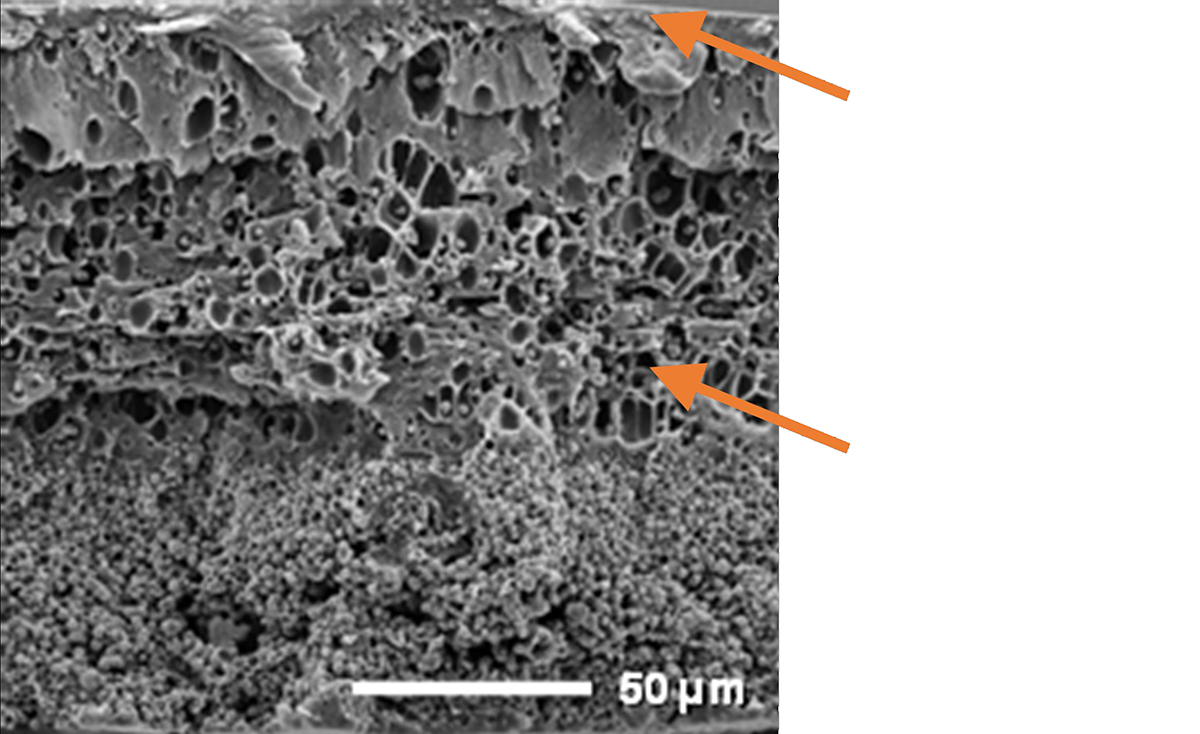Background
Membrane humidifiers are widely used for gas humidification, where a dry gas channel and a water or humid gas channel are separated by a water-permeable membrane. During the operation, water vapor permeates through the membrane from the water or humid gas channel to the dry gas channel, driven by the relative humidity gradient across the membrane. An important application of the membrane humidifier is to maintain proper reactant humidity for polymer electrolyte membrane (PEM) fuel cells. Both dehydration and flooding will cause poor fuel cell performance, as well as degraded fuel cell life. With no concerns on cross-flow or temperature and pressure drops, the membrane humidifier is considered the best choice for PEM fuel cell humidity control.
Nafion®, a perfluorosulphonic acid (PFSA) polymer, manufactured by DuPont®, is currently the material of choice for humidification membrane, due to its excellent water transport property. However, the performance of Nafion comes at a high cost. In addition, PFSA-based polymers lose mechanical and dimensional stabilities at high temperature, causing the operation of humidifiers utilizing PFSA to be restricted below 80°C. There is a need for high-temperature membrane materials, so that humidifiers can be operated at high temperatures to improve the PEM fuel cell efficiency.
Technology description
Researchers at The University of Texas have developed a new membrane material that is low-cost and can be used at a temperature as high as 200°C. The membrane is a polyethersulfone-based composite with integral foamed core and unfoamed skin. The figure below shows a cross-section of the new membrane material. The water vapor transfer rate of the membrane is comparable to that of Nafion® at low temperature, while the mechanical and dimensional stabilities are retained at high temperatures. This membrane can be used in high-temperature humidifiers for PEM fuel cells, as well as other membrane applications that will require high temperature stabilities.

Figure 1. A scanning electron microscope image of a cross section of the high-temperature humidification membrane.

